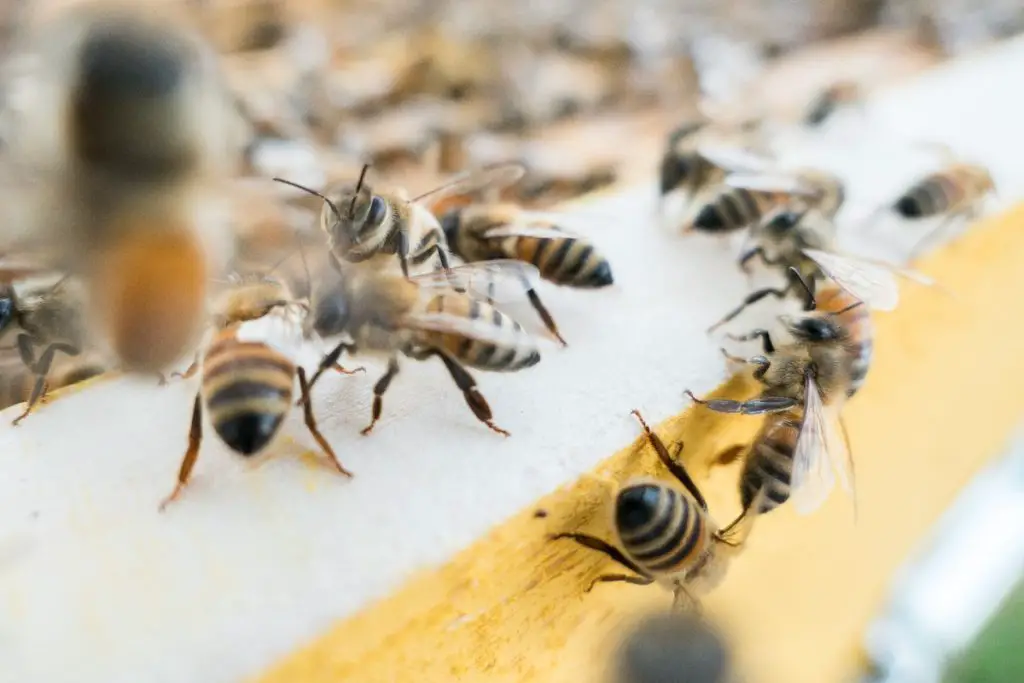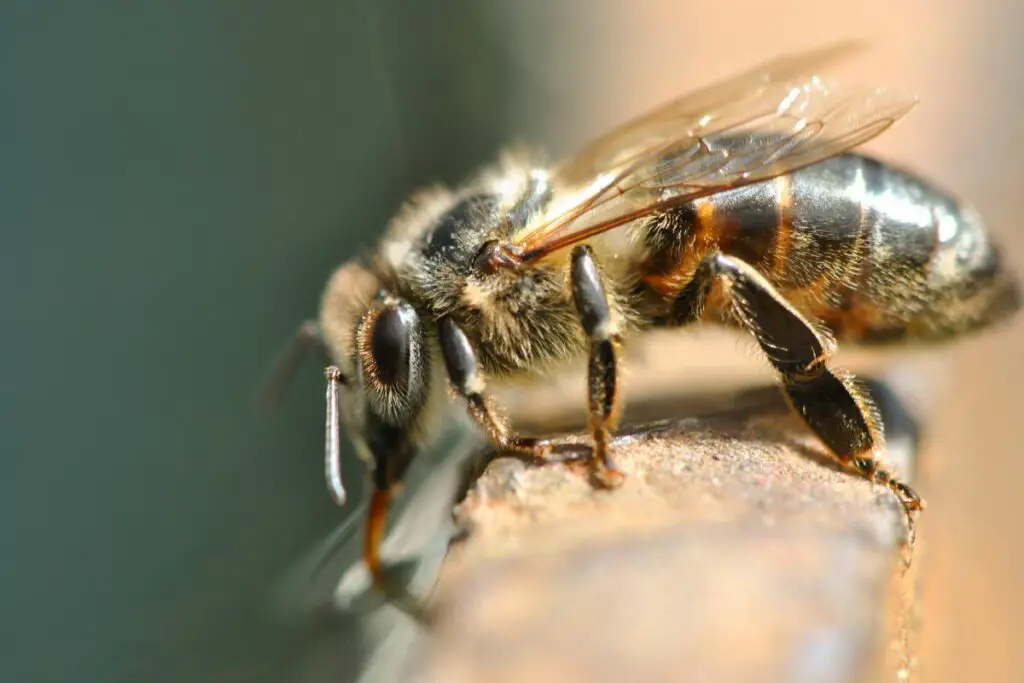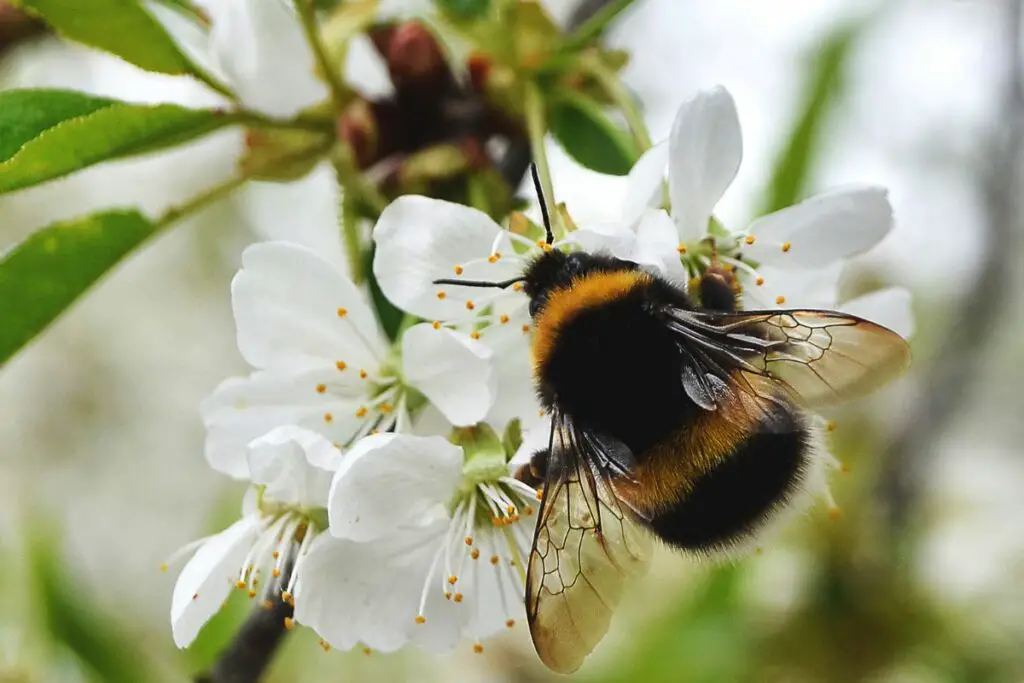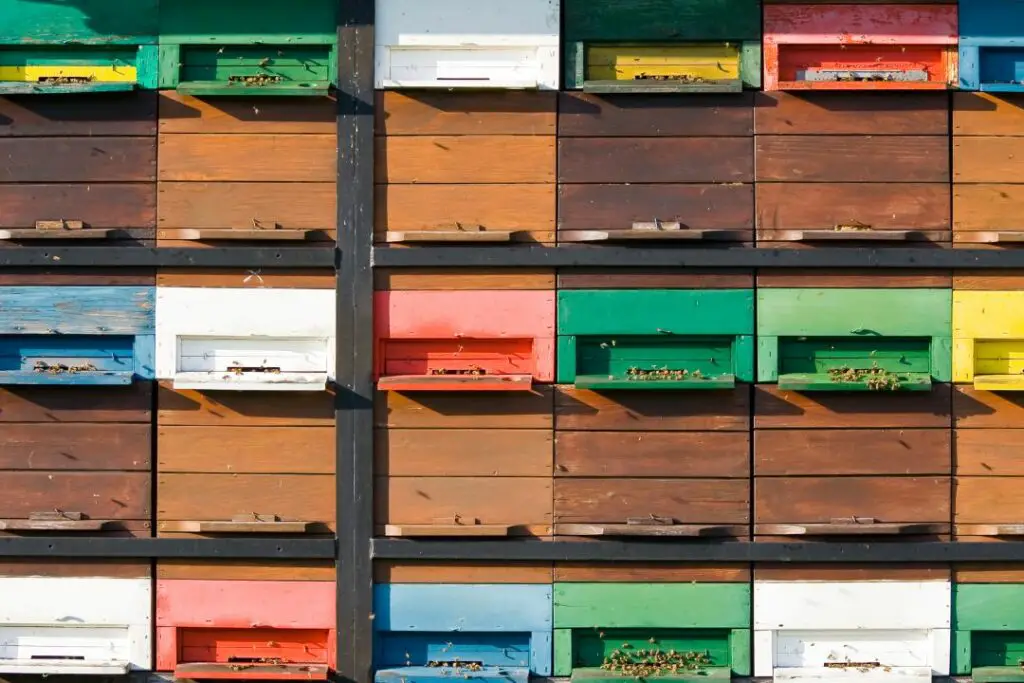Last updated on January 15th, 2024 at 03:29 pm
Bee reproduction is a complex process with requires forward planning and teamwork on a grand scale.
The process requires help from all the bees in the hive to ensure the species’ survival.
This delicate dance of life is essential to crop pollination globally and is responsible for 75% of pollination in the United Kingdom.
With so much resting on these tiny insects, let’s take flight to see how bees reproduce and multiply.
Bee Reproduction Explained
Only honeybee queens and workers are equipped with an atrophic reproductive system to lay eggs.
Approximately 6-8 days after incubation a virgin queen will take flight from the nest in search of male drones.
Honeybee queens fly up to 70ft into the air to mate with between 9 and 14 drones from other hives and collect sperm. After her flight, she’ll return to her colony to begin laying her eggs.
Eggs are nurtured by female worker bees before maturing into female (fertilised) or male (unfertilised) bees.
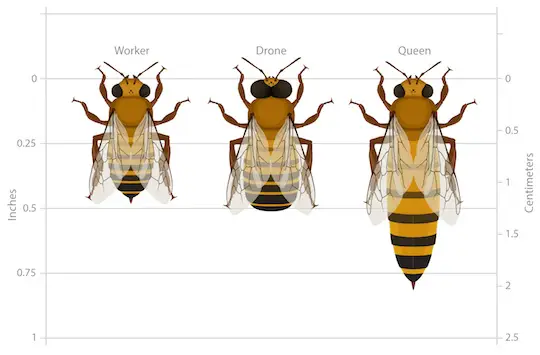
Honeybee queens are female and are responsible for laying and fertilising eggs within the hive.
As the matriarch of any hive, she is essential to its survival and plays a key role in continuing the species.
The worker bee is also female but lacks the reproductive capabilities of the queen. She can lay eggs but is unable to fertilise them and can therefore only produce drones.
The backbone of the hive, workers are responsible for all of the activities that keep the hive healthy and thriving, these include:
- Caring for young
- Gathering nectar and pollen
- Feeding the queen
- Keeping the hive cool
- Defending against potential predators and honey thieves
Drone bees are always male and their primary function is to mate with a queen. However, they do have the added benefit of maintaining the hive temperature.
How Do Queen Bees Reproduce?
Honeybee queens are equipped with a fascinating reproductive system. Unlike many other animals and insects, they have control over elements of the reproductive system.
They can choose to lay one of two kinds of eggs, a fertilised Diploid egg (female) or an unfertilised Haploid egg (male).
To begin the process of laying and fertilising eggs the queen must first gather sperm from male drone bees.
Completing this task is made simple by a part of the queen bee’s body called the Spermetecha. Once she has mated she can store the collected sperm here and use it to grow her hive when she returns.
how do bees procreate?
On sunny warm days, male drones will take to the skies from various hives.
They will travel to a specific location at 20ft in the sky. A honeybee queen will arrive at the location and proceed to mate with the male drones. A honeybee queen will normally mate with between 15 and 20 drone bees.
Her goal is to collect as much sperm as possible to take back to the hive. There is an added benefit in drones from many hives gathering in one location.
This ensures that a honeybee queen will mate with drones from other hives. As with many insects and animals, it is essential they mate outside of their heritage.
Male drone bees will mate with the honeybee queen one at a time. When a male drone bee mates with a queen he will fly over her with the ultimate goal of placing his thorax slightly above her abdomen.
A male bee’s reproductive organ is called an Endophallus which is normally tucked safely inside his body.
When mating the Endophallus will extend allowing the male bee to place it inside the queen’s sting chamber. The actual process of mating only takes around five seconds. Following this, the queen bee will move on to mate with the next available male.
Unfortunately, it doesn’t end so well for the male drone bee. Their Endophallus is torn off after the act of mating, the injuries caused our catastrophic and will lead to the death of the drone.
How Do Bees Give Birth?
While it’s not technically giving birth a healthy queen can lay up to 20,000 eggs from spring to summer.
The location of the egg has a huge bearing on its sex. Vertical cells within the honeycomb will house future queens and will be much larger in size.
Horizontal cells will be used to develop drone or worker bees to maturity. This fascinating process is a finely tuned symbiosis between the queen and the worker bees ensuring the correct structure is ready when required.
It’s worth noting that in the queen’s earlier days she will lay eggs in a structured manner. Laying egg after egg in neighbouring receptacles like clockwork.
As time passes and the queen ages, she will begin to miss holes in the honeycomb and her production speed will drop. This normally leads to a gap between each egg and then two etc.
At peak performance, a honeybee queen can lay up to 2,000 eggs in a single day a truly amazing feat.
Early Life
After the queen has laid her eggs her care for them is complete, and she moves on to lay more.
Rearing and nurturing the eggs to maturity is left to the worker bees in the hive alongside their task of feeding the drones and queen.
After three days the egg will become larvae and the worker bee’s job begins.
Worker bees have glands inside their head that can produce two different types of food. In both cases, it’s a creamy white substance with high sugar content.
The two foods are called ‘Worker Jelly’ and ‘Royal Jelly’ with the latter being thicker and richer in sugars.
Now, remember the diploid and the haploid eggs that we talked about earlier. That dictates the sex of the larvae that will appear and it’s the diet going forward.
All larvae are put on a diet of exclusively royal jelly for the first two to three days.
Only queens will continue to be fed a diet of ‘Royal Jelly’ with drones and worker bees being fed the less nutritious ‘Worker Jelly’.
Larve of a queen bee will eat 15 to 20 times the amount of jelly compared to normal larvae.
Growth
Honeybees go through several stages as they mature.
Queen larvae fed on a diet of ‘Royal Jelly’ will hatch in around 16 days due to the extra nutrients and vast amounts of jelly they are fed.
Worker bees take roughly 21 days to reach full hatch closely followed by drones at 24 days.
After three days, the outer layer of the egg will melt away becoming nourishment for the exposed larvae.
For the next five days, the larvae will feed and grow, fed constantly by the ever-vigilant house bees.
Larvae is checked every fifteen minutes like clockwork to see if it needs feeding.
Even if the larvae aren’t hungry right away, the worker bees will deposit jelly close to the mouth of the larvae for when it’s required.
Once five days have passed and the larvae are well fed and nourished the next step of the process begins. The larvae are capped inside the honeycomb using wax produced by the worker bees.
This is produced within the worker bee and forms small flakes of wax on the abdomen of the bee.

